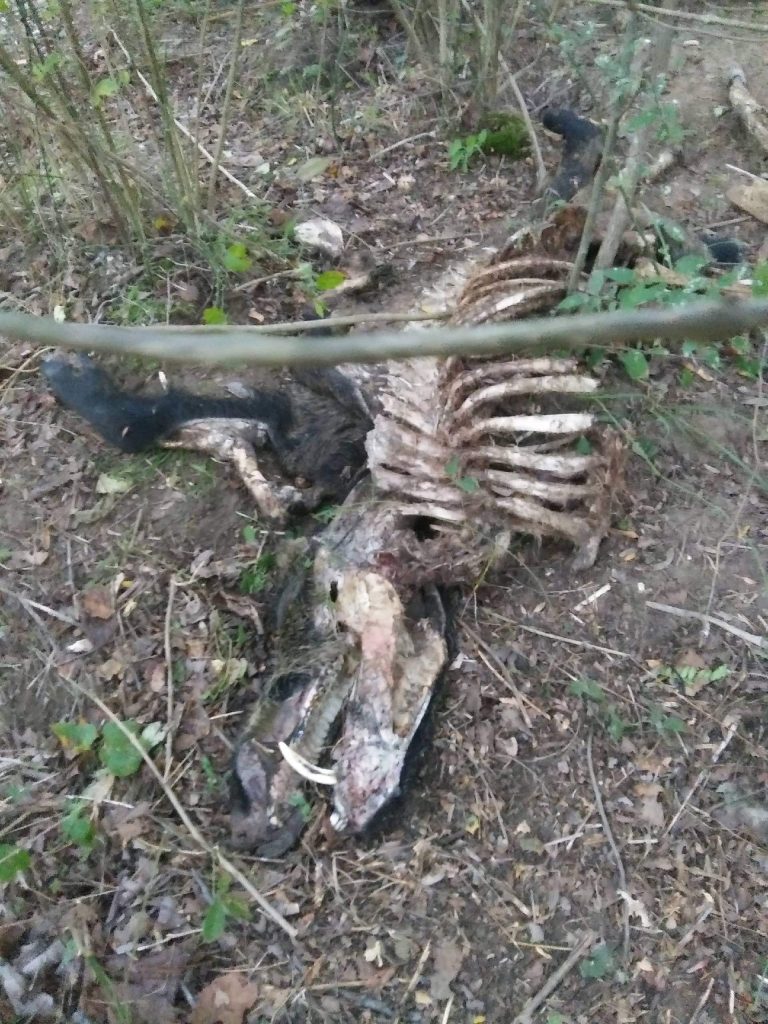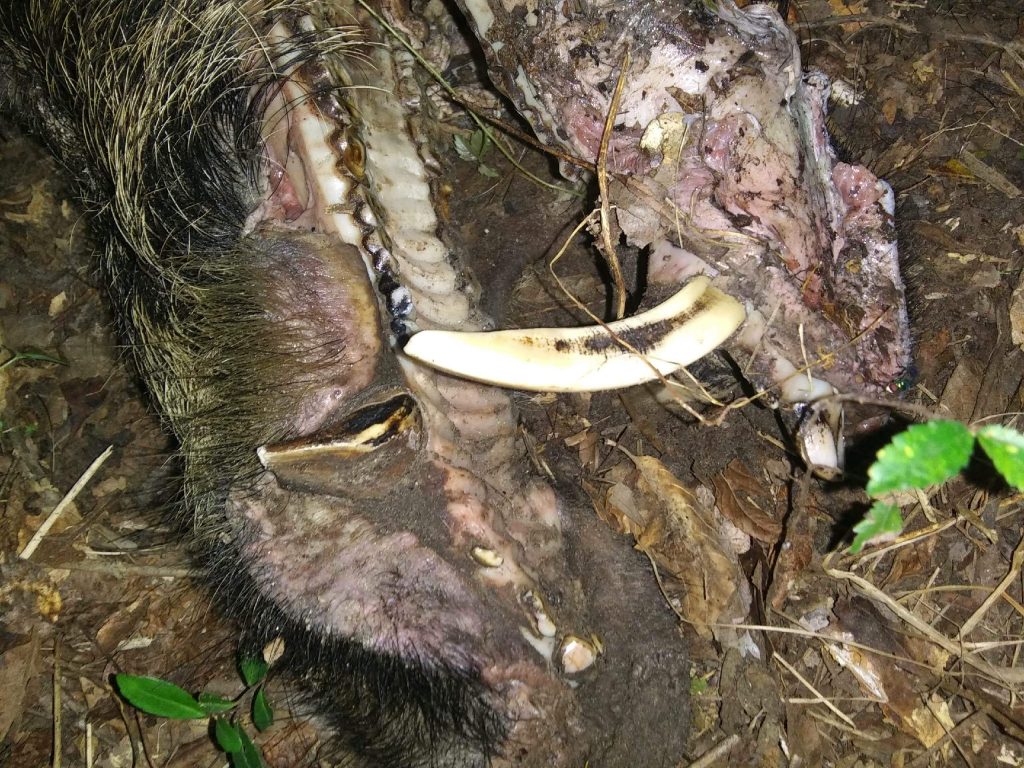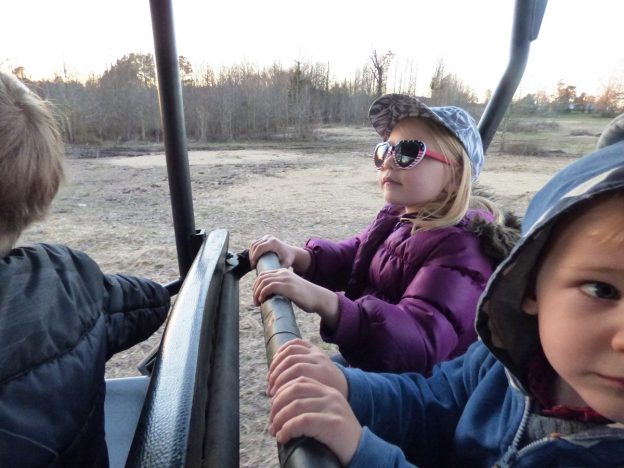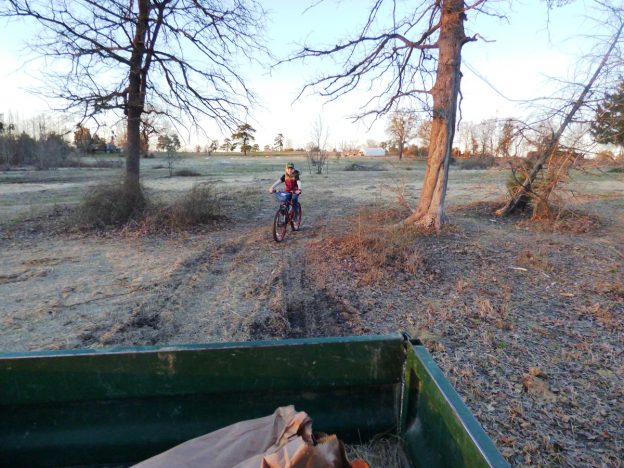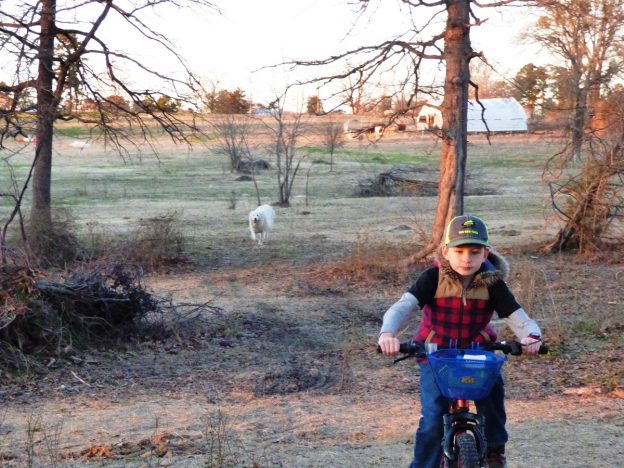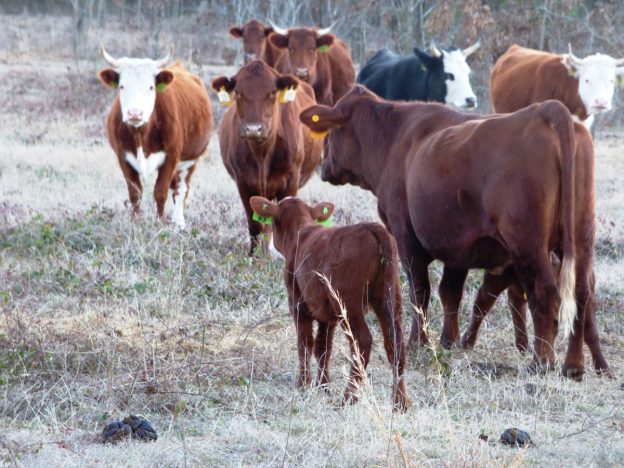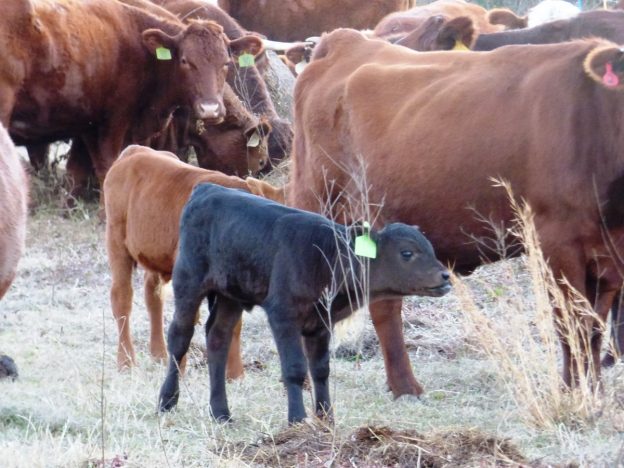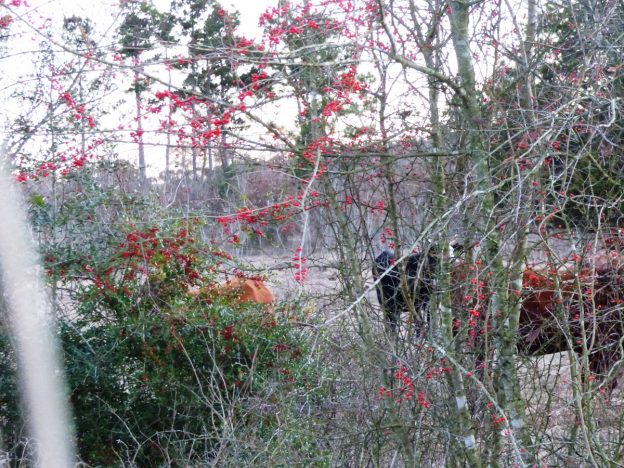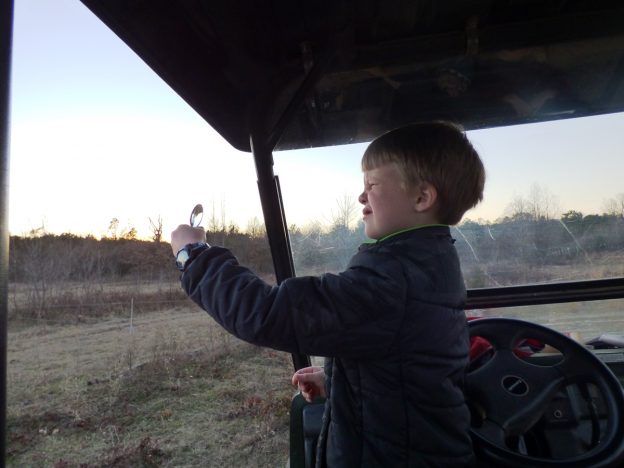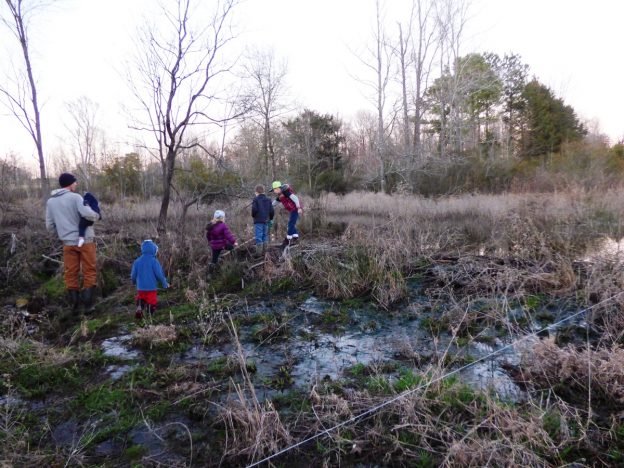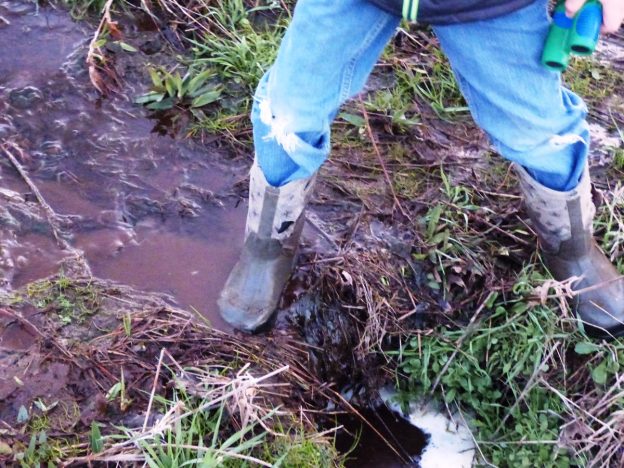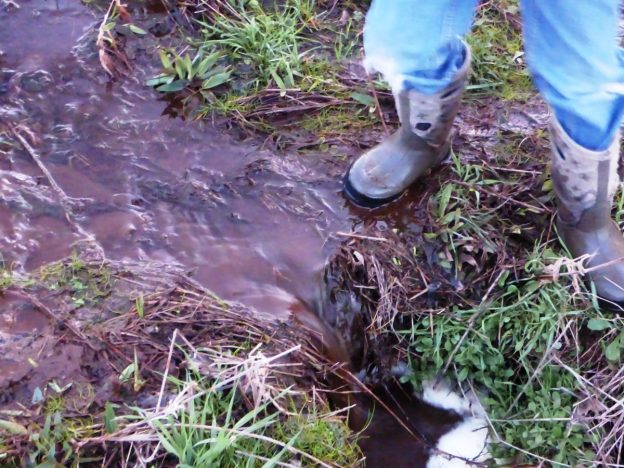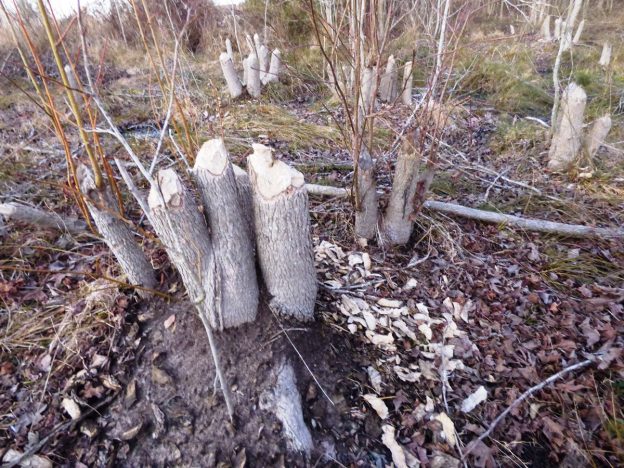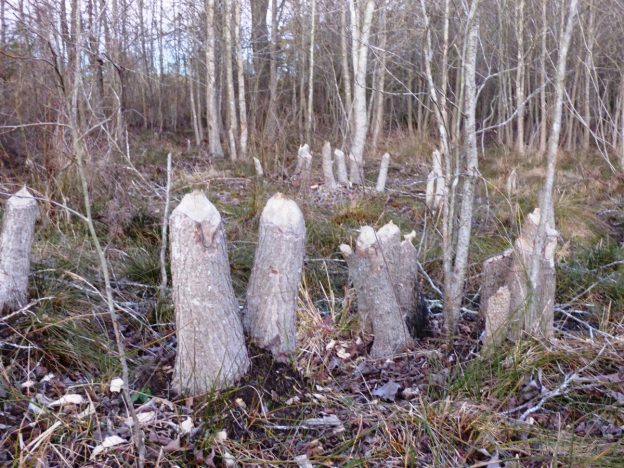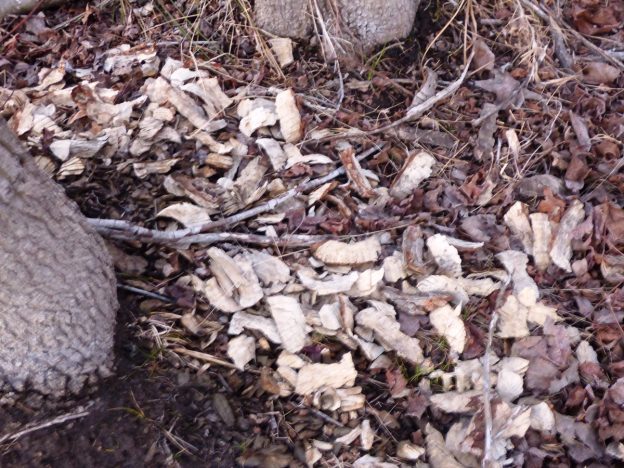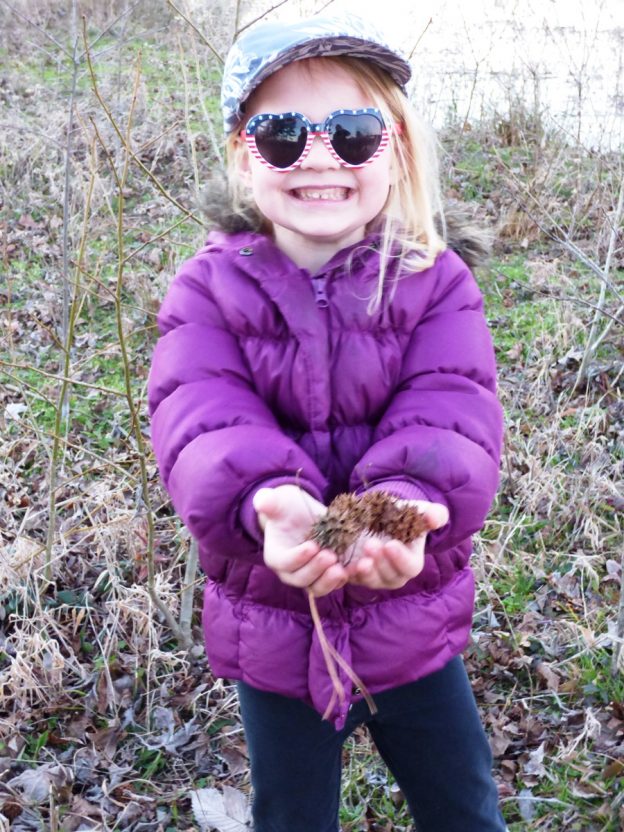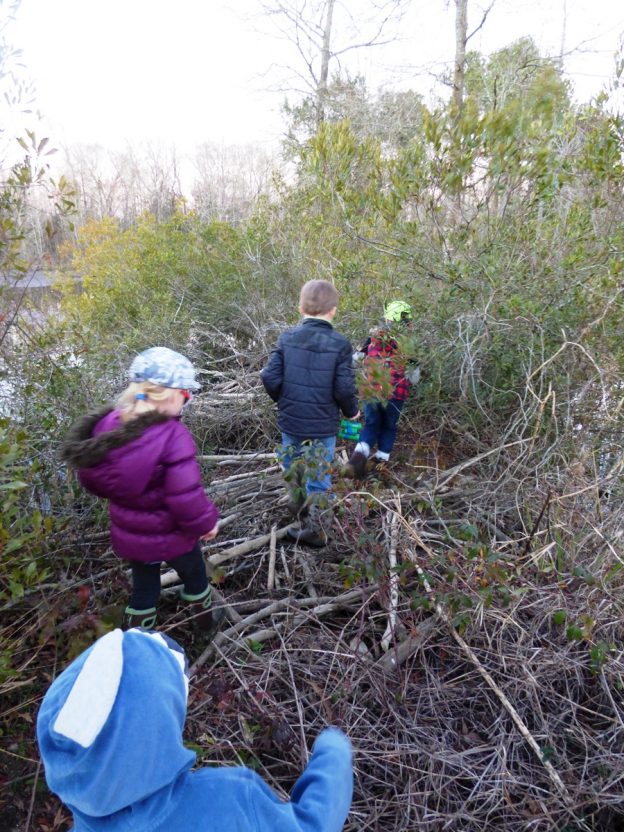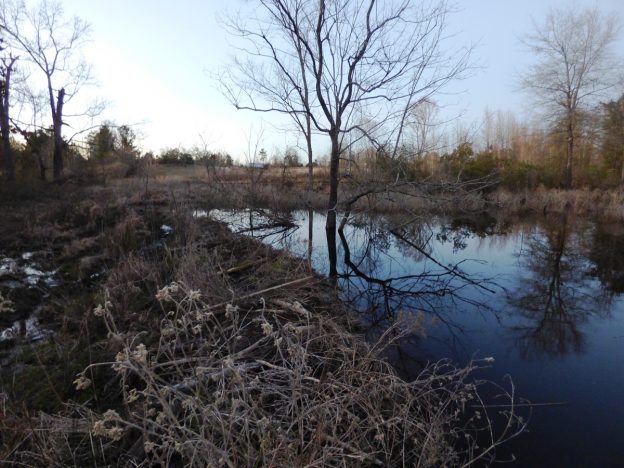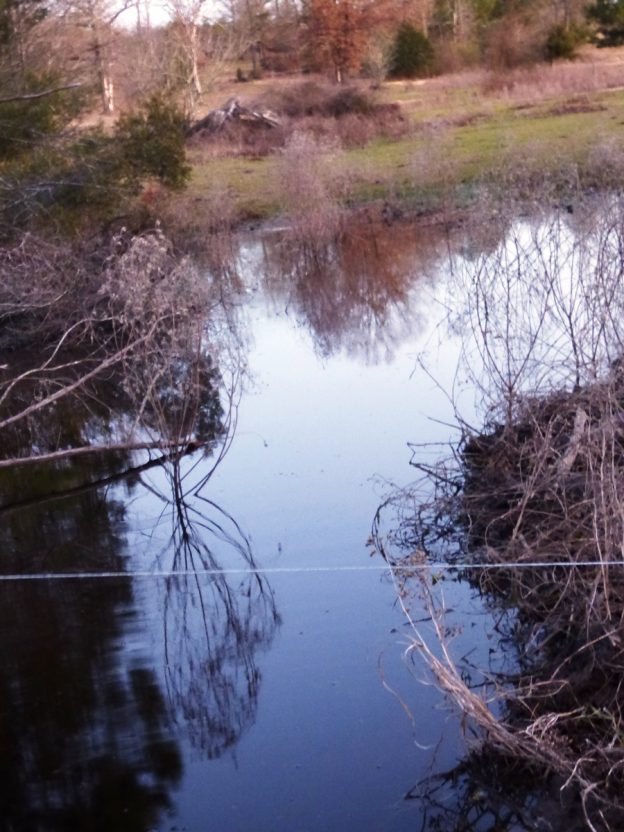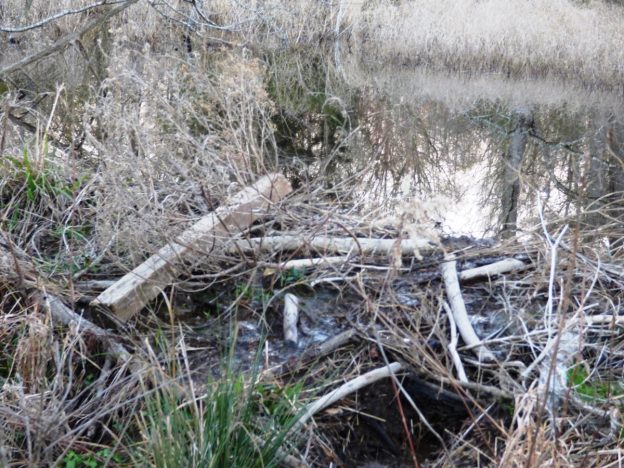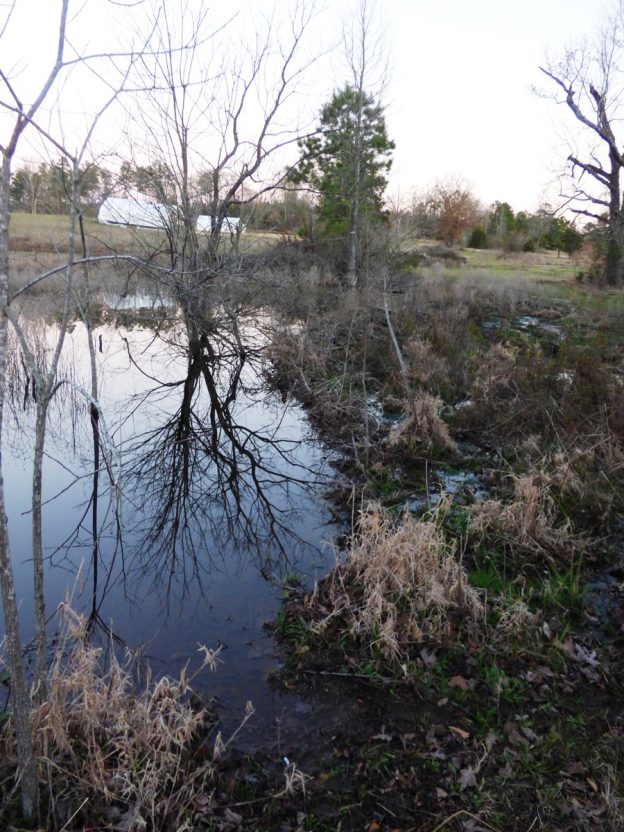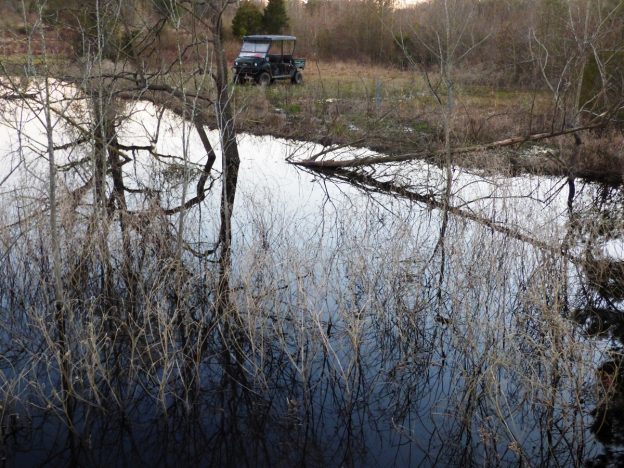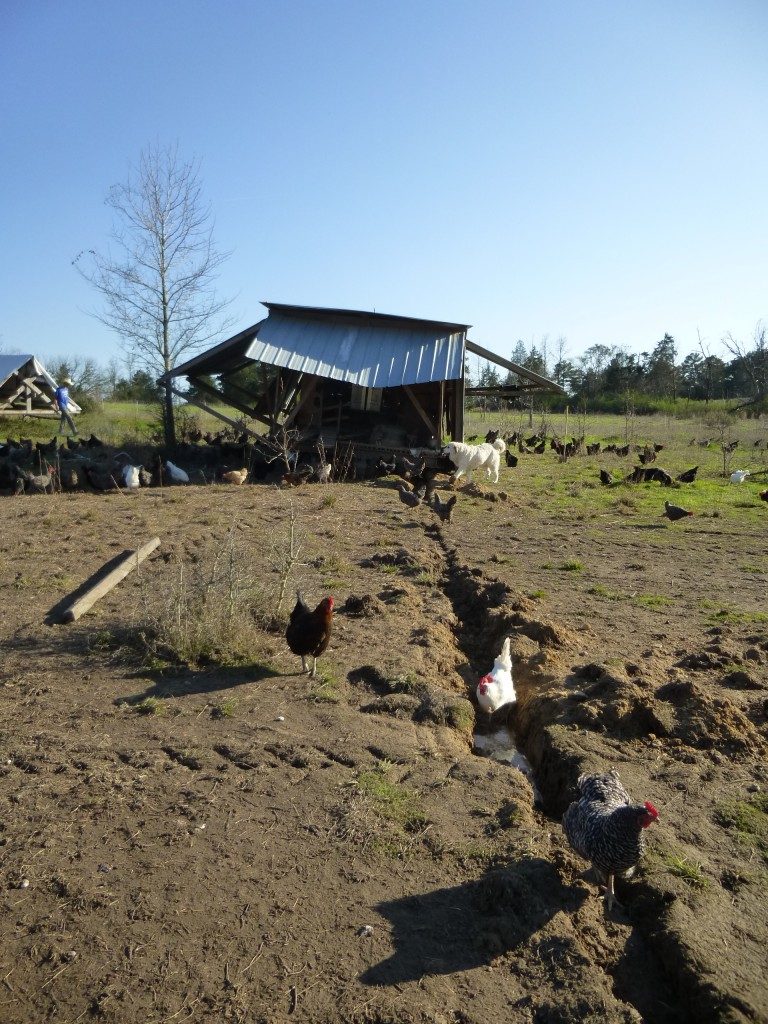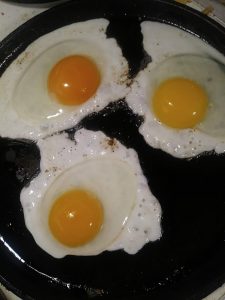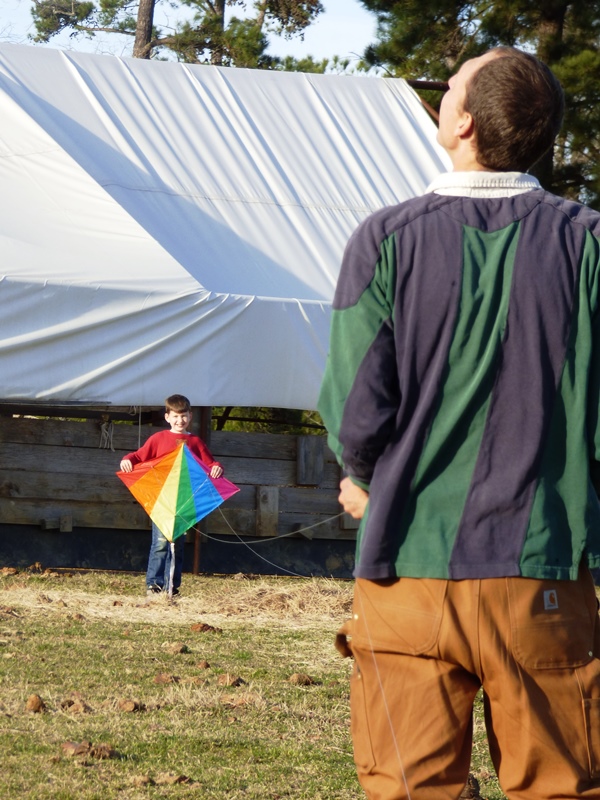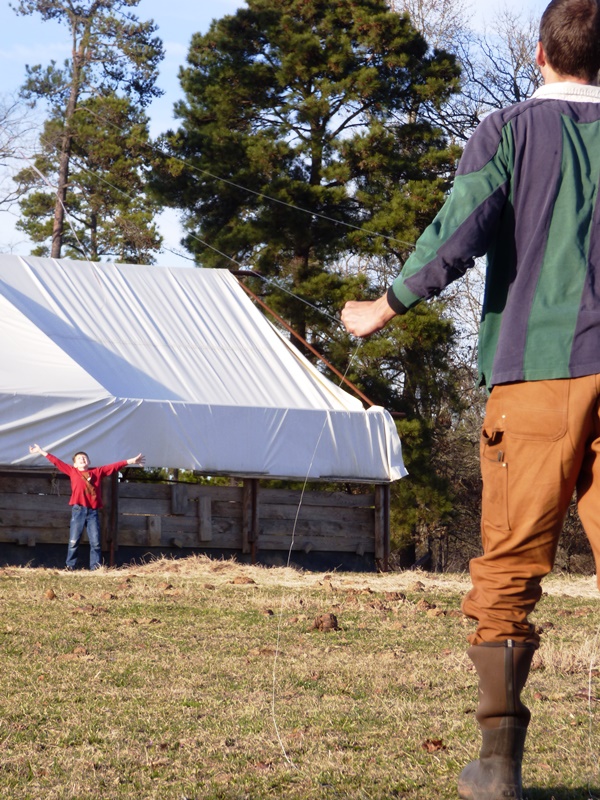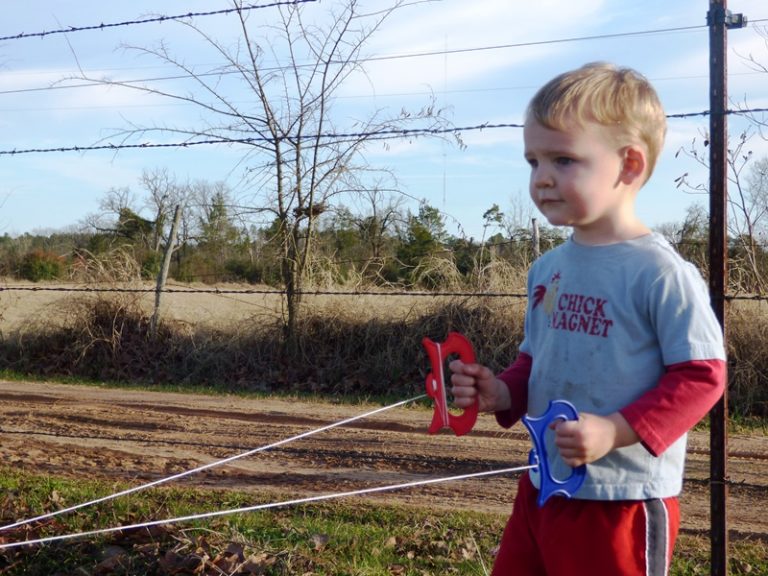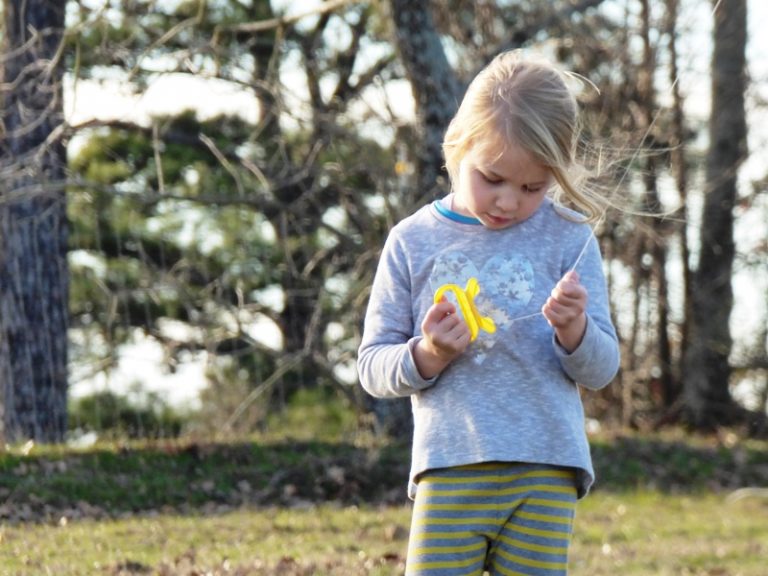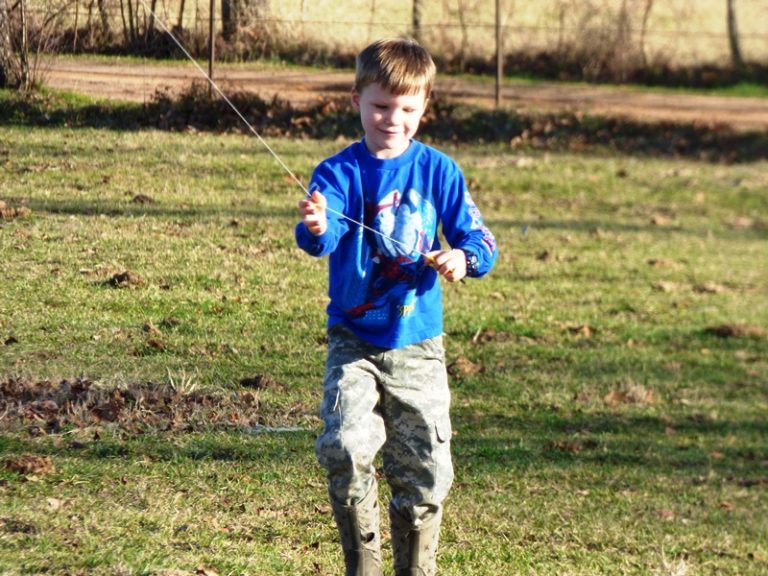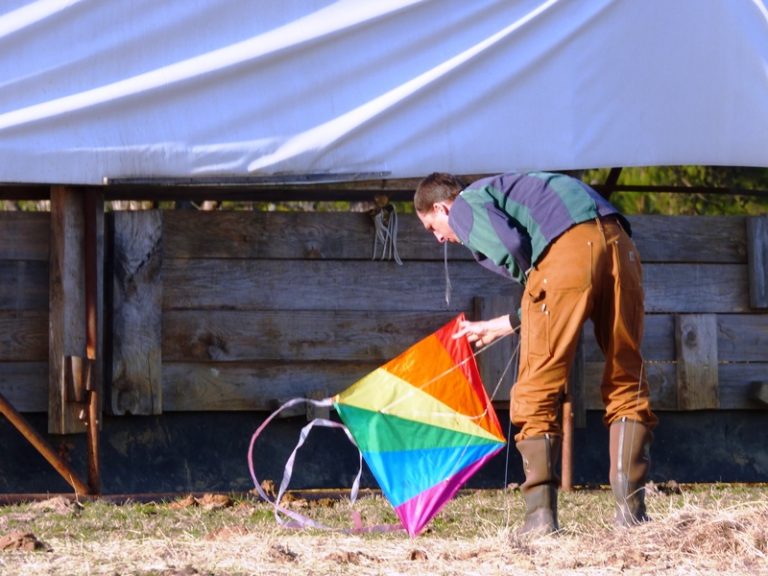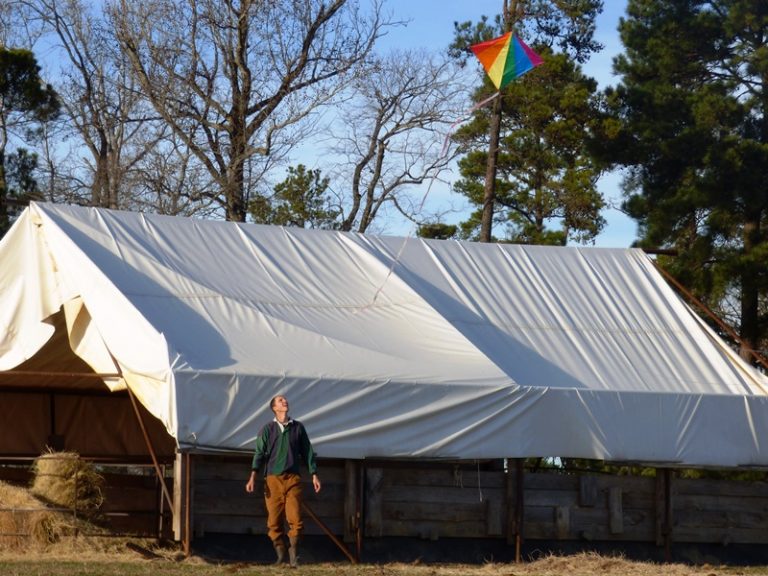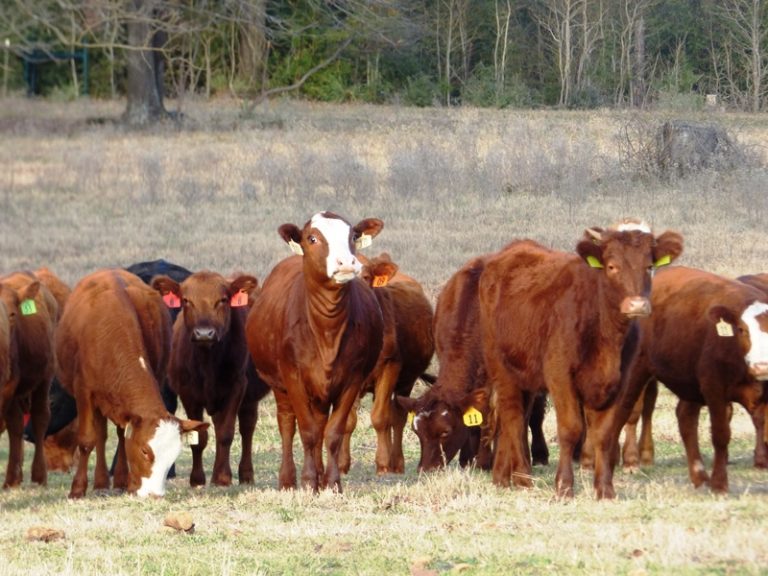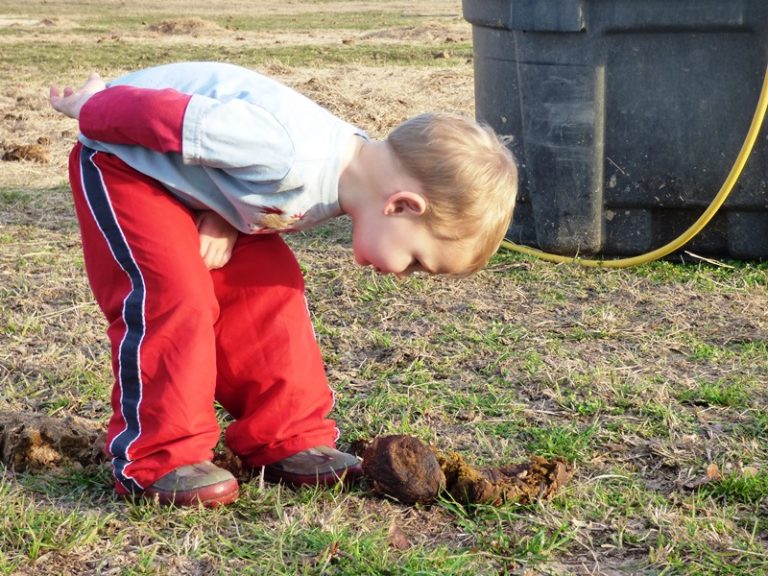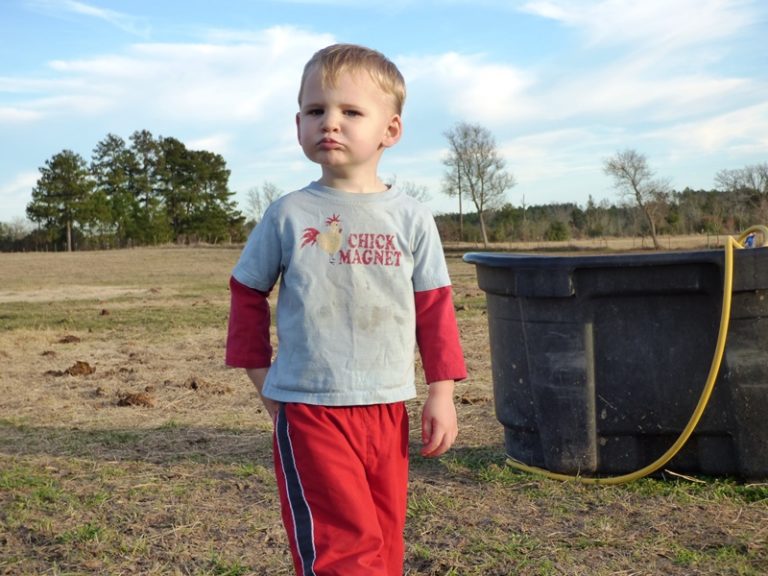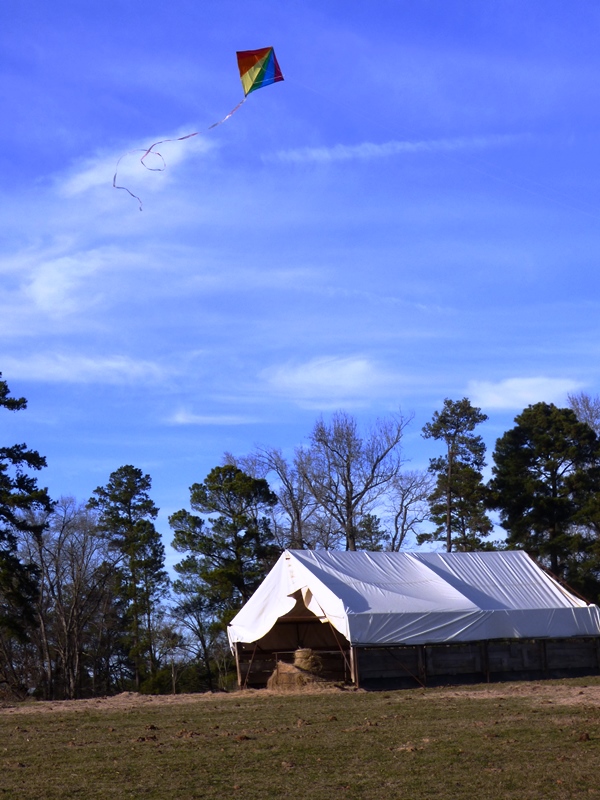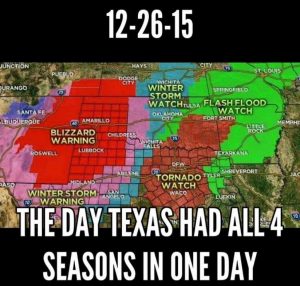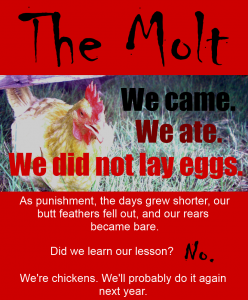The coyotes had pork for breakfast this week—and a feast it was, too!
Before your heart starts a-racing in fear for your bacon supply… I’m glad to tell you that the coyotes don’t amount to much of a threat on that front. Actually, it’s PIGS that are our pigs’ greatest threat! Pirate pigs! Wild, barbarian pigs with no manners nor decency, trying to woo our sows and gilts (that’s the girls) away from all the comforts of home. It’s the classic story of the good-for-nothing bachelor slinking his way into the courtyard of the king during the dark of night, and trying to wile away the hand of the princess (or in this case… a bunch of princesses. Hairy ones that love to roll in the mud and stick their noses in the dirt).
via GIPHY
Wild hogs. They’ve been called the bane of Texas wildlife. Why more people don’t make use of this “free food,” I don’t know (or maybe after this experience… I do). We generally don’t have too many issues with them. We’re blessed to have a neighbor that traps them as a big-time hobby. And much of our big-little farm is fenced well enough to keep the stragglers out. But not all. It takes a lot of time and money to build a truly hog-proof fence. We’re getting there, and many of our boundaries are impenetrable by anything bigger than a skunk, but we’re not arrived yet.
Once in a while a boar will show up, hungry for love. It’s pretty easy to spot fresh sign on the ground. It’s even easier to tell the difference between wild pigs and our plump domestic ones. Matt started noticing some sign on the ground around mid-September and began to up his alert status.
Then one morning around 7, Matt was on the phone with a friend from college who is venturing into farming, hoping to wean himself away from an engineering desk job. They happened to be talking pigs, and Chuck (the friend) was asking Matt’s advice about attending an upcoming pig seminar put on by Joel Salatin of Polyface Farm in Virginia. Oh the irony of it all… Matt was encouraging Chuck to consider it, but cautioned him on one big difference between Virginia and Texas when it comes to pastured pigs, and that is that Texas has a thriving feral hog population, and once in a while you’ll have attempted break-ins. As the words left Matt’s mouth, around the corner walks a wild boar! Matt propped the phone on his shoulder and pulled out his 9mm and took a couple of shots! Missed!
Matt returned from morning rounds and managed to talk me into buying a hog trap. We thought the matter would be fairly cut and dry, and even lined up a friend to come get the pig when we got him. But this boar is different. He won’t go near the trap. But he still comes to visit the girls. So the stalking continues.
Matt began to make it his habit to do his rounds with his Russian Mosin Nagant rifle in hand. One morning, he can hear some porcine flirting happening on the far side of the paddock (and these paddocks are pretty big!). So Matt spends the next hour army-crawling in a covert op to try to sneak up on him. Meanwhile the boar moseys right past Matt’s previous sniper position! Now the boar was between Matt and our own pigs, and according the Gun Safety rules (and common sense), Matt couldn’t take a shot without putting our own pigs at risk. Matt crawled behind a big bushy patch of goatweed and waited. Apparently the boar caught the human scent because when Matt peeped up over the bush, the boar was looking his way. The boar was in range, but there was no way to reposition the rifle without alerting the pig! So Matt quietly pulled out the 9mm again and waited for the boar to come around the corner. Sadly, the pig walked off at an angle and by the time Matt peeped again, he was out of range. The pig gets away again!
This can only mean one thing… WAR!
Matt began stalking the pig daily with his rifle. He also began to be concerned that his rifle wasn’t sighted in properly. The Mosin was a mass-produced rifle and was equipped with a very steep trigger pull of 10 pounds, which makes it rather inaccurate. Matt brought in an expert—another college buddy and fellow gun collector, who happens to be a retired Marine. Titus loaned Matt his souped-up Mosin with archangel stock and custom trigger. They did some target practice, and sure enough, with these minor equipment improvements, Matt could indeed hit a bullseye—who knew! 😉
Over the next days, the boar was spotted and Matt had him in sight, but at the long distances he was positioned from, Matt couldn’t positively identify him against our own pigs. It’d be a shame to kill one of our own pigs that had escaped from their paddock by some weird accident!
Normally, killing a boar is fairly cut and dry. He might get in, hang around like one of the gang, then at feeding time, Matt would pop him off with little trouble at all. But this boar is different. He is one wary dude.
October arrived and we thought our lives were never going to be rid of this pesky wild pig. It was an ever-present fear because at any moment, that pig could clobber our electric fences and take the whole herd with him, creating one major bacon shortage. Talk about stress!
One Sunday morning, Matt went out at dawn to hunt, again. When he arrived, he heard pigs in the woods out to right of the paddock—weird… Had an entire herd of wild pigs invaded? Then he spotted a big pig in front of him—that’s not a wild pig… that’s ours! Now the covert op is off—it’s rescue mission time! The best way to recapture a domestic pig is to play it cool, so Matt nonchalantly went into breakfast-time mode. Every one of our 25 pigs was out, so Matt spent the next who-knows-how-long getting them all back in. Thankfully it worked and it was time to finish feeding everyone. He walked up on one of our sows laying down, and just on the other side of her was a black, scraggly ear sticking up—the boar!
Matt drew his pistol and took a shot. But the boar RAN OFF! How???
Matt returned, frustrated and tired. He determined that he must take this pig out, once and for all, and it would have to be under cover of night. We did manage to get to church that morning, but Matt was brooding over the worry of his pigs escaping any moment. When we returned home, Matt headed out to Academy Sports to buy a night vision scope. The gun personnel mounted it to his rifle, and he returned to the ranch just as the sun set. Another day lost to this pig.
He managed to sight the gun in and then after night fell, he headed down for what he hoped would be the final hunt. Sure enough, there’s the boar. Matt shoots! He MISSES AGAIN! He discovered that the worker at Academy had not mounted the scope correctly. It had come loose and was no longer calibrated. “If you want something done right…” Back to square one!
Scope fixed and sighted in, Matt continued to check the paddock, armed, 3-4 times per day. The boar had obviously grown bolder and danger of herd escape was imminent.
The Mosin he had borrowed, though accurate, is heavy and ideal for shooting long range from the prone position, not so much for freestanding short-range shots. So during his routine check this past Tuesday, opportunity arose when the pig happened to walk right in front of Matt. He fired from the standing position. But the pig ran off! Matt had missed AGAIN! Whatever aspirations Matt may have had in life, it seems ending as a famous sniper is not one of them. The long battle would continue…
The next day, there was no sign on the ground, and no sighting.
Wednesday Matt went out again before dawn with the night scope, hoping to end it once and for all. Too many hours had already been spent. He was tired. I was tired. It was a frustrating experience with no clear ending.
While watching, Matt heard some coyotes in the forest nearby. They were louder than usual—it sounded like they were fighting. Fighting over something.
There was still no pig.
I had started to think we’d be battling this pig forever. It had been over a month. So many hours. And still no clear path forward. Such is the farm life. Sometimes we face insurmountable odds. Sometimes it’s exhausting, both bodily and emotionally! During one of Matt’s long days out, and it seemed like every spare moment was spent trying to get rid of this pest, the kids and I prayed for some confirmation that the pig was no more, that the battle would end and not carry on forever.
Thursday we did our Longview and Marshall deliveries, and Matt knew it’d be tight timing with a hunt before our departure, so he went ahead and put his “town clothes” on under his hunting attire early that morning.
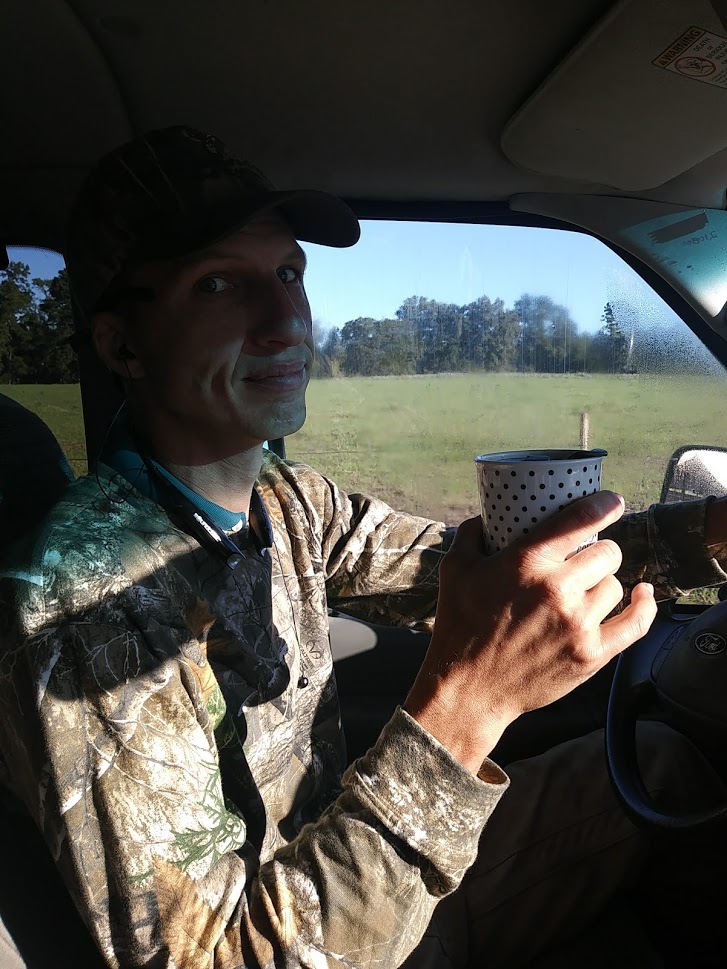
Matt and I were still both tense about the situation. I asked over and over if it was possible if he had hit the pig. But there wasn’t blood. Could it be the aim was that off? It didn’t seem to add up. Matt went to check on the pigs for maybe the hundredth time since this all occurred, and this time he decided to track that coyote activity to see exactly what it was they were fighting over.
Sure enough, the coyote-breakfast was pork, fresh-killed by a souped-up Russian rifle. Matt had gotten to know this boar quite well over the past month, and was able to unmistakably identify what was left of the carcass, only 50 yards from where he had taken the hit on Tuesday. Boars are tough. Super tough. Matt’s previous experience had taught him that it’s not uncommon for a boar to have smoke coming out of the bullet wound while he’s still going full speed, even with a high-powered rifle like a Mosin! In this case, he only made it far enough to elude us one more day. But not far enough that we couldn’t get some closure.
A fitting end, we think. Coyotes don’t bother us too much so long as we keep them out of our chicken paddocks. Especially when they clean up after us!
Life returns to normal… for now!
We hope you’ll come meet the now-safe SGR pigs in person at our final farm tour of the year. It’s only 2 weeks away on Saturday, October 27! Sign up here.
–Jerica, the Farmer’s Wife
If you care to see the remains of the pig, including his giant tusks, keep scrolling down.
